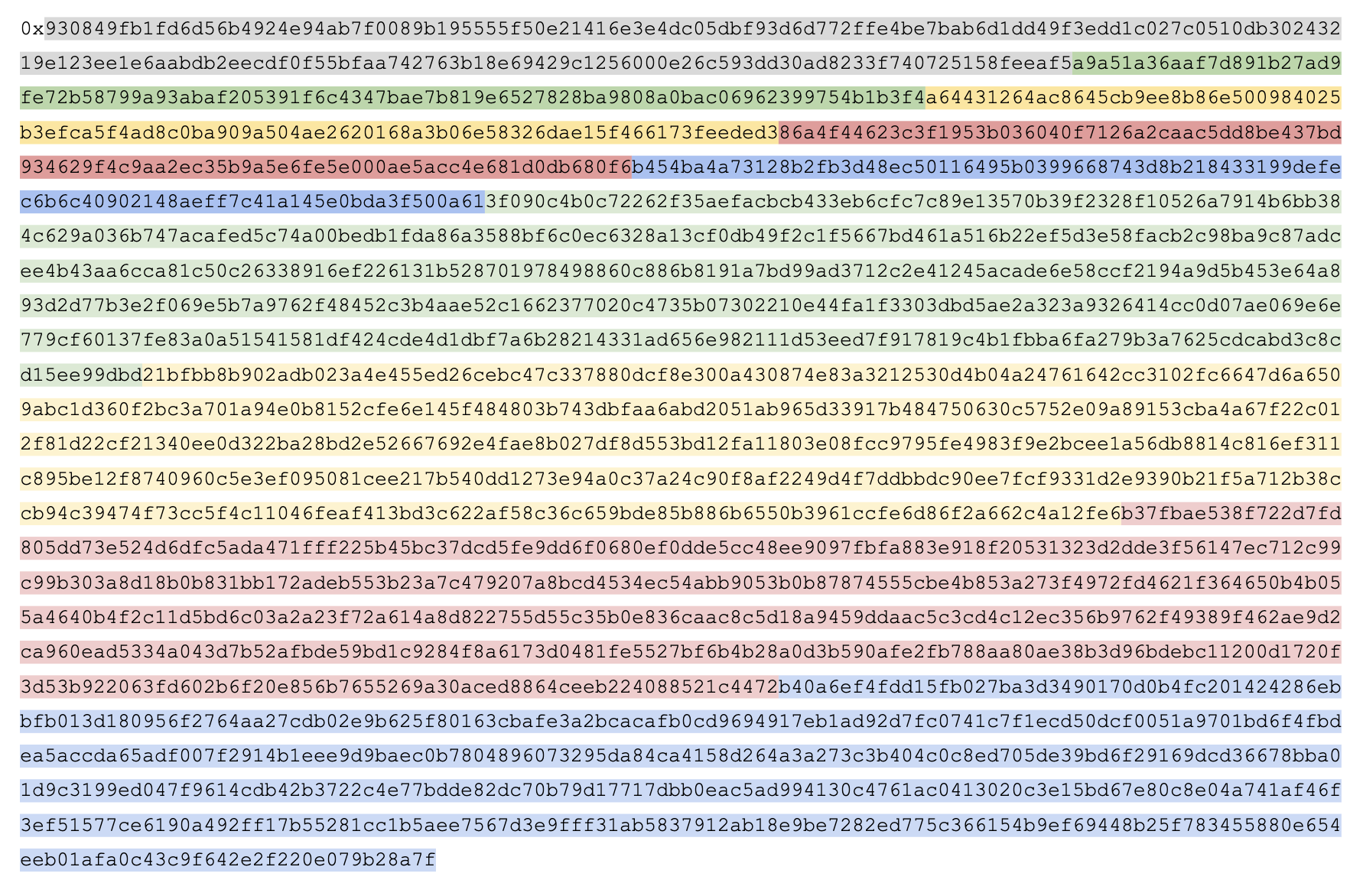Keyshares file structure
An example of keyshares.json structure:
{
"version": "v1.1.0",
"createdAt": "2025-05-14T10:23:43.794Z",
"shares": [
{
"data": {
"ownerNonce": 0,
"ownerAddress": "OWNER_ADDRESS",
"publicKey": "VALIDATOR_PUBKEY",
"operators": [
{
"id": 1,
"operatorKey": "OPERATOR_PUBKEY"
},
{...},
{...},
{...}
]
},
"payload": {
"publicKey": "VALIDATOR_PUBKEY",
"operatorIds": [1,2,3,4],
"sharesData": "ENCRYPTED_SHARES_DATA"
}
}
]
}
Details about sharesData field
Below is an example of sharesData from a Hoodi validator with 4 operators. Each segment is highlighted with color:

Explanation of each segment:
- Signature - First 192 characters (excluding
0x) is a serialized BLS signed message (read more about SSZ here). The message itself isownerAddress:ownerNonce, it's signed by the validator private key and consequently can be verified using validator'spublicKey. - Shares' public keys - An array of concatenated BLS public keys. Each element is a public share of a validator's key and is 96 characters long. The number of shares depends on the number of chosen operators.
- Encrypted shares - An array of concatenated BLS encrypted keys. Each element is a private share of a validator's key and is 512 characters long. The number of shares depends on the number of chosen operators. Shares are encrypted with each operator's public key and can only be decrypted with the respective private key.
If you want to learn more about keyshare verification, you can dissect verify-keyshare repository on GitHub:
validateSingleSharesfunction inssv-keys.tsdoes the signature verification.buildSharesFromBytesfunction breaks down each operators' keyshare.areKeysharesValidfunction then checks the signature and operators' keyshares agains the validator public key.